21 pokedex entries by leandermalurt
Bulbamuku hide among the short grass at beaches, gathering energy from the sun while they sleep. Sometimes, large groups of Bulbamuku join together to imitate grass and avoid preying bird Pokémon.

Kabudreavus wants to be left alone. The ribbon-like growths from its head are made of rock and form a terrifying display to scare off other Pokémon and cave explorers. If anyone gets too close, it disappears through a wall.
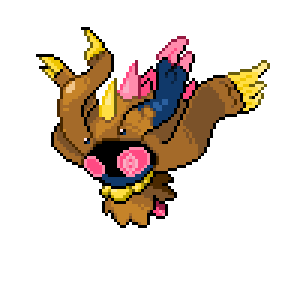
Their curved blades have made Pidblade a popular Pokémon among pirates. During the night, they hunt down bug Pokémon by cutting off the branches that the bugs sleep on and carry them back to their nests in the mountains.
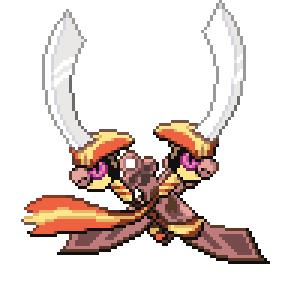
Quagcool was long thought to be a discoloured version of Tentacool until a researcher on beach vacation discovered a dead one and classified it as a separate species. They are sought for their ink, which has a special dark blue tint.

Donskull stealthily hunt those who have hunted Donphan, often appearing in the middle of the night. Their tusks are the only corporeal part, making them as deadly as their threatened kin.

In magma-filled caves deep beneath the earth, the smoke rising from hot pools took on a physical form. Enwile cannot leave the volcanic or tropical regions where they live, as their smoky bodies would disappear in colder climates.
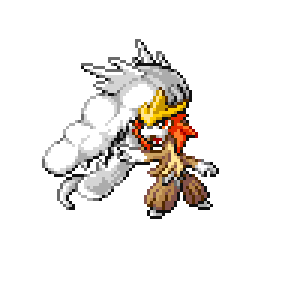
Suinium are famous for their special diet. They only eat leaves that have been touched by sunlight or have hung down into a lake or sea. They use their ribbons to reach these exclusive leaves.

Cranphan headbutts palm trees to make coconuts fall and catches them with its horns. Young Cranphan turn this into a game, tossing fruit with their trunks and catching it mid-air.

Wailbarel chops down enormous trees, then carries them over large distances to make dams that are large enough to appear on maps. Some believe that the largest lakes in the world are in fact artificial lakes made by Wailbarel long ago.

They live on exotic islands, and frequently swim to nearby islands to find more food. The double fins make Milopom exceptionally good swimmers. Tame Milopom use their fins like fans to cool down their Trainers when the temperature rises.

Milova leave the shallow pools where they were born as soon as they can, and move into nearby forests where they thrive by lakes. They make a buzzing melody when they fly, and are known as the "Violas of the Lake".
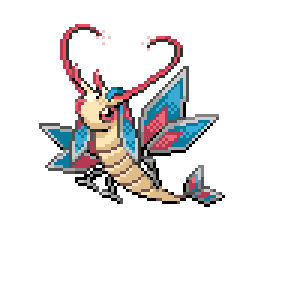
The intensity of Volcalia's graceful dance movements gradually escalates until it emits a buzzing sound. The focus required to perform the dance heightens its mystical powers. If interrupted before finishing, Volcalia will throw a tantrum.

Jigglyitar take great pride in having the most stylish and well-maintained curls. They are often seen absentmindedly staring into a lake while trimming them. Though exposed to predators while doing this, their brute strength keeps them safe.

When hikers report mysterious blue lights in mountainous forests, they have usually seen the fire of a Shuphox. Those who witness it often return feeling angrier and more envious than before.

In ancient days, Tyrankou were fierce and feared predators. An electric current runs through their skeletons, even reaching their teeth. Prey hunted by them often bear signature scorch marks left at the site of the attack.
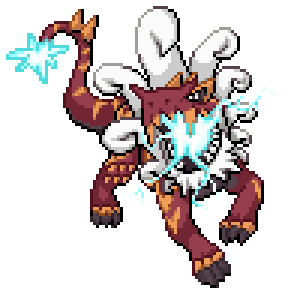
As Noiterra grow older, they grow in size, mimicking mountains and letting hundreds of Pokémon rest inside their caves. When provoked, their supersonic soundwaves create local earthquakes.
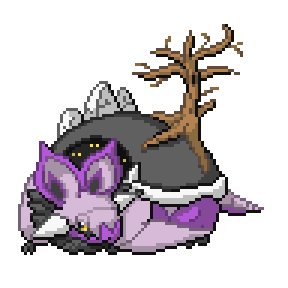
Once every year, Auromence battle in the northern night sky above frozen mountains to decide the next leader of the herd. Their shimmering wings and Aurora Beam attacks create a fantastic display of northern lights that draws in many tourists.
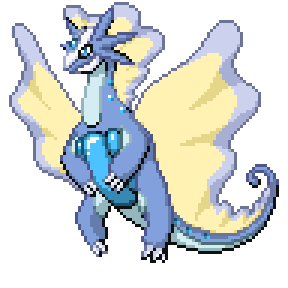
Diangoo moves slowly across the cavern floor, searching for fine crystal dust to grow its crown. Because its body is camouflaged against the cavern, Diangoo is the origin of many local rumours about living crystals.
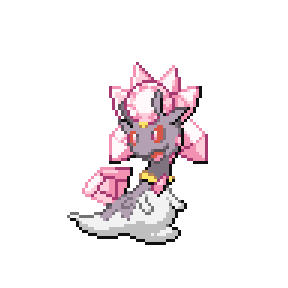
The mane of Ponydra is coated in magnesium, which enables it to burn underwater. Fishermen call it the "Mars of the Ocean" due to the distant red glow seen in deep water at night.

The two heads of Magnerill are both the same magnetic pole, constantly repelling each other. Only the black cord between them keeps them from drifting apart. They migrate together in search of an opposite magnetic pole.

Seeder hide in the frigid darkness of the northern seas. They sleep for twenty hours to keep their body temperature low, then spend the last four hours tearing apart dead fish with their magnificent teeth.
